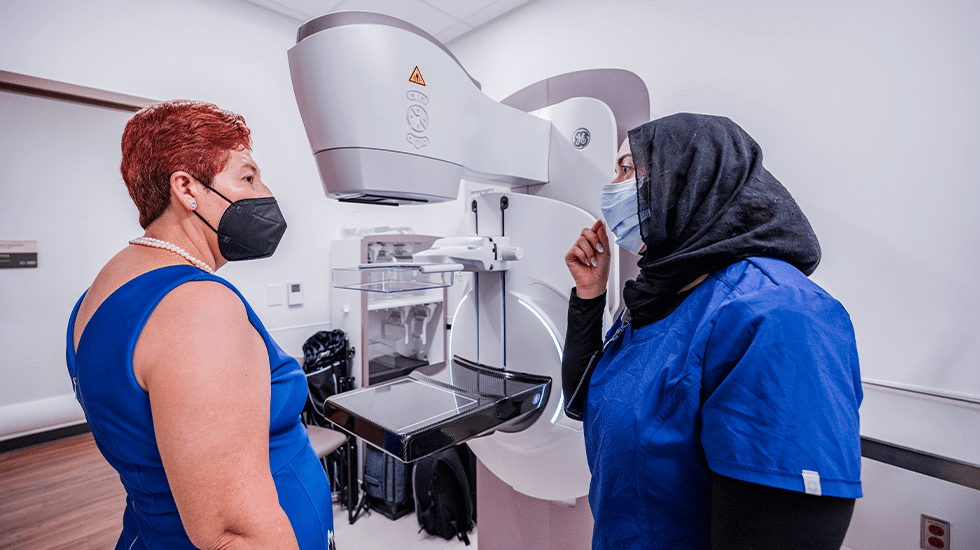


If we’re being honest, we can admit that a mammogram isn’t the most fun activity to check off your to-do list. But that doesn’t make getting your annual mammogram any less important or necessary. There are several ways to make mammograms easier and more comfortable. Preparing for your mammogram and knowing how to advocate for your best mammogram experience can empower you to take charge of your own health.
At your mammogram appointment, a mammographer will be present in the room with you. This person is there to perform the imaging and to help make the process as comfortable, efficient, and successful as possible for you.
You should know what your body’s “normal” looks and feels like. Get to know your “normal” by performing monthly breast self-exams. It’s also important to know the symptoms and signs of breast cancer. If you need a reminder, download our free Know the Symptoms Guide. Any time you notice an abnormality or anything different about your breasts, let your doctor know. Abnormalities may include:
You may be considered at high risk for developing breast cancer if you have:
If you are at high risk, you should ask your provider for supplemental screenings, such as tomosyntheses (3D mammograms), ultrasounds, and MRIs, in addition to regular screening mammograms.
If there is a family history of breast cancer, you may be advised to begin annual screening mammograms earlier than the recommended age of 40.
Generally, it is advised that women begin receiving some form of breast cancer screening 10 years before the age a first-degree relative was diagnosed with breast cancer.
For example, if your mother (or other first-degree relative) was diagnosed with breast cancer at the age of 48, your doctor may recommend you begin screenings at the age of 38. Consult with your healthcare provider about what screening—and when—is appropriate.
Feeling anxious about getting a mammogram, or any medical test, is normal. Sharing how you feel with your mammographer will help them address any concerns you might have.
Knowing you have the best team handling your care can help ease your anxiety. You can ask for a breast imaging radiologist (versus a general radiologist) to read your mammogram.
Breast imaging radiologists specialize in interpreting images of the breast. They read mammograms, breast ultrasounds, and breast MRIs, and perform diagnostic breast procedures that can help diagnose and treat breast cancer. To find a breast imaging radiologist, visit the website of your chosen facility and read the radiologist bios. You can also call and ask the facility directly.
Building positive relationships with staff at your mammogram facility will likely set you at ease. You can ask to see the same mammographer each time to build that relationship and help you feel more comfortable.
Some level of slight discomfort is expected during a mammogram due to the pressure applied by the testing equipment.
However, if you have experienced extreme pain during a past mammogram, or experience extreme pain at your upcoming mammogram, let your mammographer know immediately so they can help you have the best, most comfortable experience possible.
A mammogram may be uncomfortable depending on:
Mammogram cushions are also available to help relieve discomfort. These cushions are placed on the surface of the image detector, providing a softer, more comfortable mammogram.
Clear and open communication is key to advocating for your breast health. Begin by sharing important information with your mammographer and prepare for a positive, if not completely comfortable, mammogram experience.
Donations are always appreciated, but there are lots of great ways to get involved.
I was diagnosed with DCIS stage 3,on my left breast & had full mascetomy in June 2022.
I am due a Mammogram (only )in May this year,2024,had one last May 2023 & it was clear.
I am anxious already & don’t think I can take another diagnosis, also have mental health problems.
They told me it only be a Mammogram, NHS
I had to have a second mammogram because I have dense breast that 2nd mammogram was really painful have never felt that pain before of all the mammogram’s I’ve had